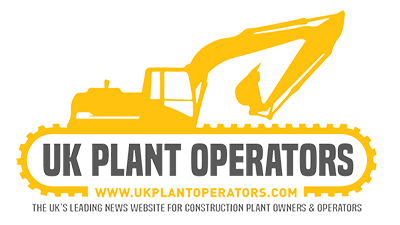![]()
Volvo CE has unveiled a new project that furthers its efforts in “Building Tomorrow.” The company has partnered with professional futurists to gather their forecasts for the industries that Volvo CE’s customers work in, including construction, agriculture, mining and infrastructure. The company has also partnered with students from the Columbia College of Hollywood to animate these visions of the future.
Futurists forecast the coming trends in science, technology and business. They help companies understand how the innovations of today will impact the industries of the future. Volvo CE recently engaged David Zach and Glen Hiemstra — known for their work with dozens of innovative fortune 500 companies — to provide expert forecasts on where the industrial industries may be headed.
“In order to build tomorrow, that means having a good sense of what tomorrow may look like,” said Stephen Roy, senior vice president for the Americas, Volvo CE. “While no one can be 100% certain about what the future has in store, these professional futurists can give us an educated guess based on the research, science and economic trends we see today. We asked students from the Columbia College of Hollywood to animate some of these forecasts so that we have a vision of the possible future from those young persons who will soon inhabit it.” Presented below are a sample of the forecasts for each industry. Each one includes a link to view a more in-depth report on each industry that includes many more forecasts presented in richer detail. Scroll down to view the Columbia College of Hollywood’s animations.
ROAD INFRASTRUCTURE
Nanotechnology will enable roadways to be built from more resilient glass-like materials.
Photogenic cells along roadways will capture solar energy for transporting to local power grids.
Self-healing epoxies will enable bridges and other metal structures to “heal” themselves from damage.
Roadways will have embedded censors that provide road, weather and traffic conditions.
Autonomous equipment that is fully electric and emissions free will handle duty-cycle work.
Sensors in construction equipment will provide data for predictive analytics and increase uptime.
CONSTRUCTION
Buildings of all sizes will be increasingly modular, utilizing more prefabricated elements.
Entire rooms and their furnishings will be built in a specialized location, then installed at the job.
Flying drones will monitor construction on job sites, reporting critical data and visualizations.
Rolling drones will travel up and down building shafts and behind walls to take readings.
New paint polymers will improve air quality while wall sensors monitor for chemicals, smoke and fire.
Entire neighborhoods will be 3D printed, then completed with prefabricated elements.
WASTE MANAGEMENT AND RECYCLING
Companies will have more responsibility over the entire lifecycles of their products and the materials used to make them, creating a more “circular economy.”
Vehicles that collect waste and recycling will be fully electric, reducing emissions and noise.
Waste and recycling bins will become autonomous, driving themselves to collection points.
Robots will use artificial intelligence to separate materials, “eating” some of them for energy.
The gamification of the industry will lead the work to become more scientific and videogame like.
Machines that accept recyclables will show what those materials will be used for in the future.
AGRICULTURE
Vertical skyfarms near cities will boost the amount of food that can be grown on a single piece of land.
These indoor farms with multiple stories give the ability to control weather, irrigation and pests.
Plants on all farms will be tagged with RFID and sensors to control nutrient and water intake.
Autonomous electric construction equipment will help prepare lands and transport harvests.
Robots that use artificial intelligence will pick crops and sort them for either human use or composting.
Halophytes, crops grown in saltwater, will help tackle freshwater shortages around the globe.
MINING
Autonomous and remote-controlled equipment will remove humans from dangerous situations.
Humans will control mining equipment from remote locations via simulators that give tactile feedback.
Automated, fully electric machines will handle repetitive duty-cycle work with no emissions.
With programmed, autonomous machines, mining operations will work around the clock.
Robots will move in to pick materials from mine shafts and use artificial intelligence to sort them.
We will increasingly extract materials from the ocean, asteroids and other planets.


















